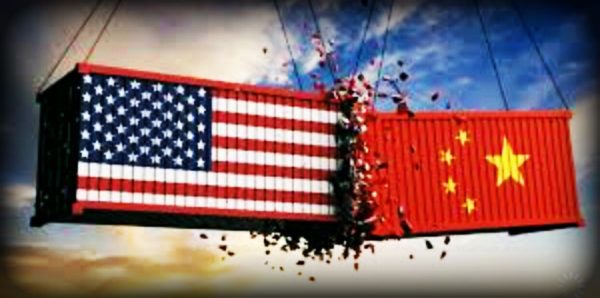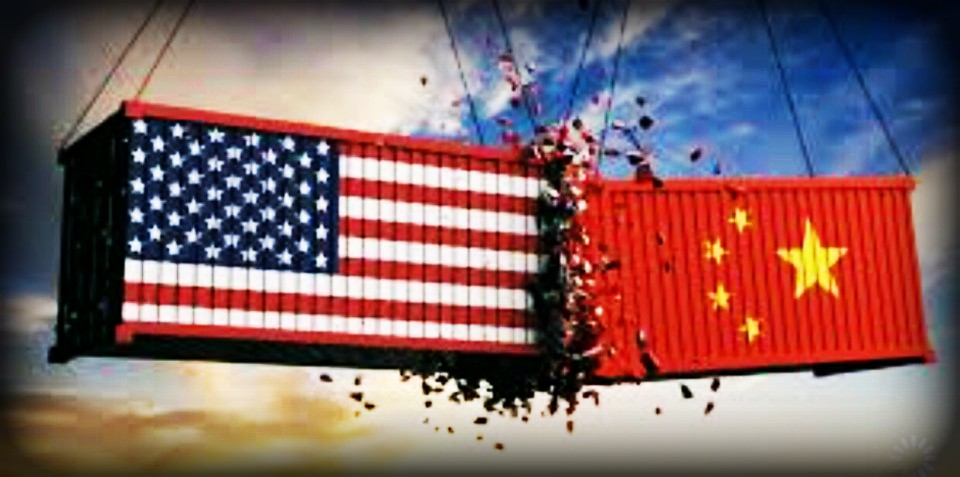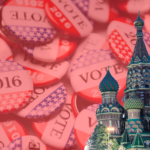 Keeping in line with his campaign promises to take a tough stance on trade with China, President Donald Trump has placed the United States into a full scale trade war with the People’s Republic of China.
Keeping in line with his campaign promises to take a tough stance on trade with China, President Donald Trump has placed the United States into a full scale trade war with the People’s Republic of China.
On June 15, 2018 Trump announced tariffs on $50 billion of Chinese imports and, as of July 6, 2018, $34 billion worth of tariffs have already taken place [1]. China responded when they announced a 25% charge of $16 billion worth of U.S. goods, focusing on large passenger vehicles along with several different types of fuels [2]. Many experts believe this move was initiated to match our upcoming $16 billion dollars in tariffs to be initiated on August 23. Taxing imports is antithetical to the conservative commitment to free trade and the neoliberal economic tradition.
Trump claims these measures are being taken as a response to rampant intellectual property theft perpetrated by the Chinese, which, according to the Commission on the Theft of American Intellectual Property, costs the U.S $225-$600 billion [3]. This trade war has the potential to constrict growth across the globe while impacting far more than just the U.S. and China.
A paramount part of trade policy in the Trump administration is to put “America first” in all negotiations and directives. One point of public contention is the motivation behind these drastic tariffs. Initially, Trump cited these measures as a retaliatory provocation for the pervasive Chinese patent theft. Later, he claims that these tariffs will overall benefit U.S. industries by forcing them to buy American products.
Vendetta
The vendetta here is America first vs China last. Establishing a precedent that shows the world the United States isn’t to be so callously robbed is one thing, but playing an international game of chicken with global markets is another.The president, and his administration, must decide if they are truly putting America first, or trying to send a message to China by mortgaging the fragile economic future of the nation and its allies.
Currently the U.S. has $50 billion of tariffs levied against China which will be completely in effect by the closing of August. On August 7th, the President released a 195 page list which comprises $200 billion of Chinese imports which would be subjected to a 10% tariff. This past July, China instituted $34 billion dollars in tariffs on the U.S, and have another $16 billion ready for showing its willingness to combat the U.S. at every single stage of this escalating trade conflict.
What is most worrisome about these policies is that Trump may have taken from the tragic playbooks of Hitler and Napoleon by starting a two front war. Earlier in the year, Trump excoriated the North American Free Trade Agreement, or NAFTA, for its lopsided benefits at the expense of the United States. In March, he implemented a 25% tariff on steel and 10% for aluminum to target Canada and Mexico.
Since the first announcements of this new path of protectionism, Russia, Turkey, and India have started placing tariffs on hundreds of millions of U.S. goods. These figures may seem infinitesimal at first but, if the trend continues, U.S. export business may begin to have serious revenue and subsequent workforce contractions. With all of these factors considered the Trump administration has two courses of action:
To truly put America first the administration should:
- Keep the focus on sending a message to China while relieving tariffs on other nations
- Disincentivize firms from investing in China
- Purchase more Chinese yuan to increase the price and make importing from China less desirable
- Establish more equitable trade relations with other allies
If the administration wants to focus on putting China last they will:
- Steadily increase the total tariffs on China and other nations that have favorable trade negotiations with China
- Stagger the economy by focusing on common consumer goods and Chinese agriculture that affects many industries
- Risk trade negotiations with other countries by continuing to take a protectionist stance on trade
- Make U.S. markets less accessible through tariffs.
Insulating domestic industries from foreign imports is a centuries old economic strategy, however restricting the overall flow of capital on a global scale will ultimately do much more harm than good.
Resolution
The best course of action would be to target sectors of Chinese imports that the U.S. has substantive evidence of patent theft, this will better elucidate to the international community that the scope of these tariffs is narrow and specific to China. If we are going to target Chinese consumer products, target the nonessentials that use large amounts of plastics such as toys, accessories, and office supplies. These goods are cheaply produced and have many substitutes, meaning the impact will only be felt by a few retail chains (with the added environmental angle). NAFTA can be renegotiated without damaging relations with our neighbors. The steel tariffs on NAFTA nations should be reduced from 25% to 15% as a show of good faith and to aid manufacturers who use large amounts of steel.
This will show Canada and Mexico that the U.S. is seriously about trade that benefits all parties involved. Classical economic theory dictates that all parties that participate are rational and self interested. The United States puts itself first in every international engagement as does every other nation, we do not need to assert our primacy via trade warfare. A compromise does not always mean a loss and hopefully this administration will not escalate this trade war further, as the interconnectivity of global markets makes the entire world susceptible to any economic contagion this conflict may beget. If the president truly cares about putting America first, he and his administration will approach trade with more finesse and consideration headed into the future.
Take Action:
Oppose the Trump steel tariffs? Sign up here!- https://petitions.moveon.org/sign/protest-trump-steel-tariffs
Care to view the positive argument for Trump’s tariffs? Look here- http://foxnews.com/opinion/2018/07/02/trumps-trade-critics-are-wrong-his-tariffs-could-bring-major-benefits-to-america.html
Not exactly sure about the nature of tariffs? See a closer examination here- https://money.cnn.com/2018/06/08/news/economy/tariff-questions-answered/index.html
Want a timeline of the US/China trade war? Look no further- https://digitalcommerce360.com/2018/07/06/timeline-of-the-trump-china-trade-war/
References:
- “A Timeline of the US and China Trade War”, Digital Commerce 360, accessed August 13, 2018.
https://digitalcommerce360.com/2018/07/06/timeline-of-the-trump-china-trade-war/
- “China slaps 25% tariffs on $16 billion worth of US goods”, CNBC, accessed August 14, 2018. https://cnbc.com/2018/08/08/china-announces-25percent-tariffs-on-16-billion-worth-of-us-goods-including.html
- “Why is the US accusing China of stealing intellectual property?”, Marketwatch, accessed August 14, 2018. https://marketwatch.com/story/why-is-the-us-accusing-china-of-stealing-intellectual-property-2018-04-05




